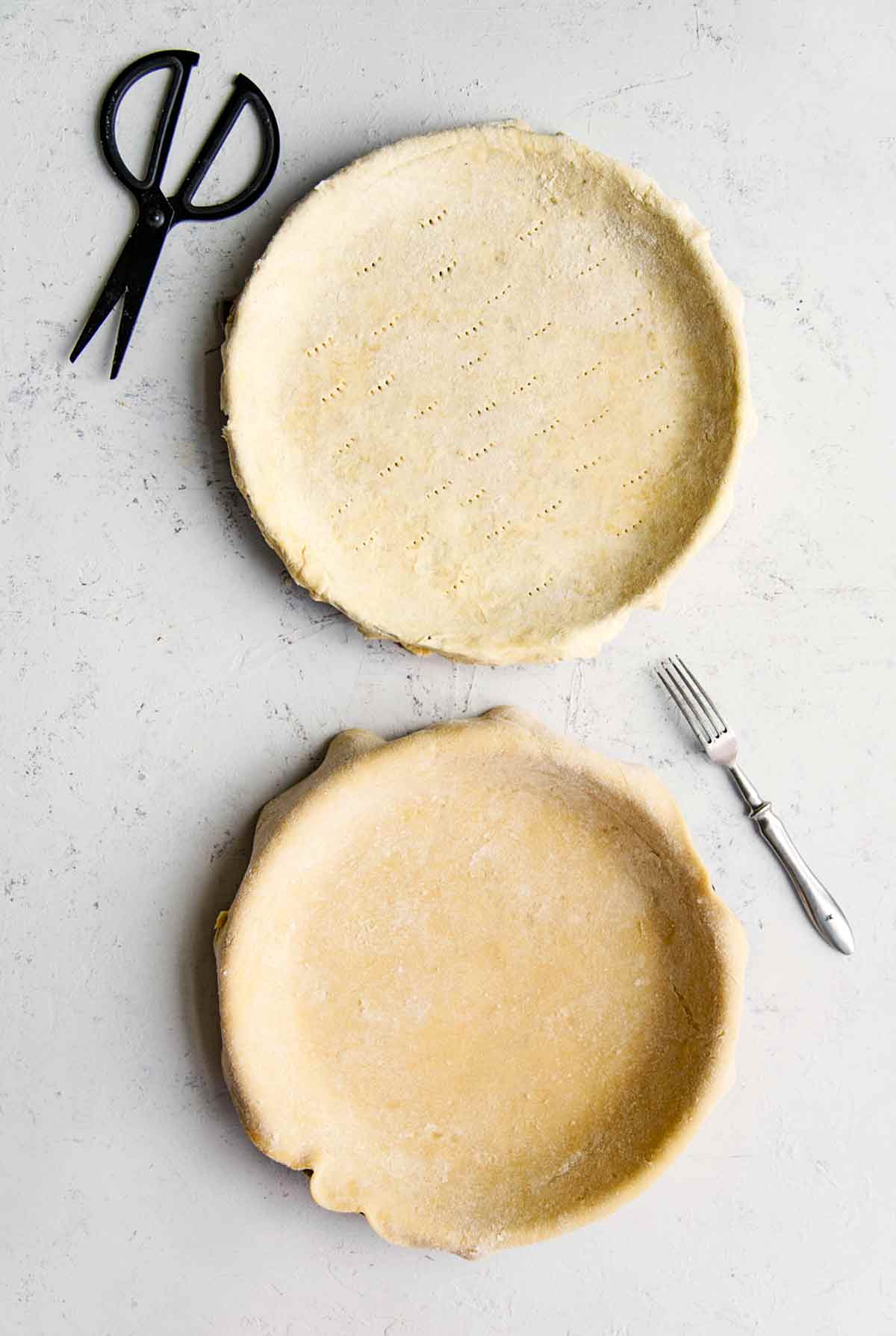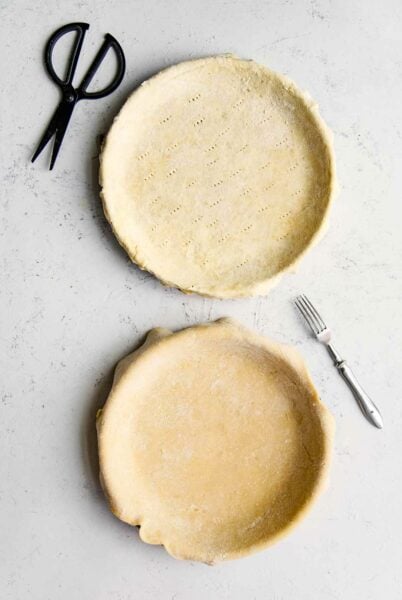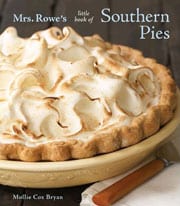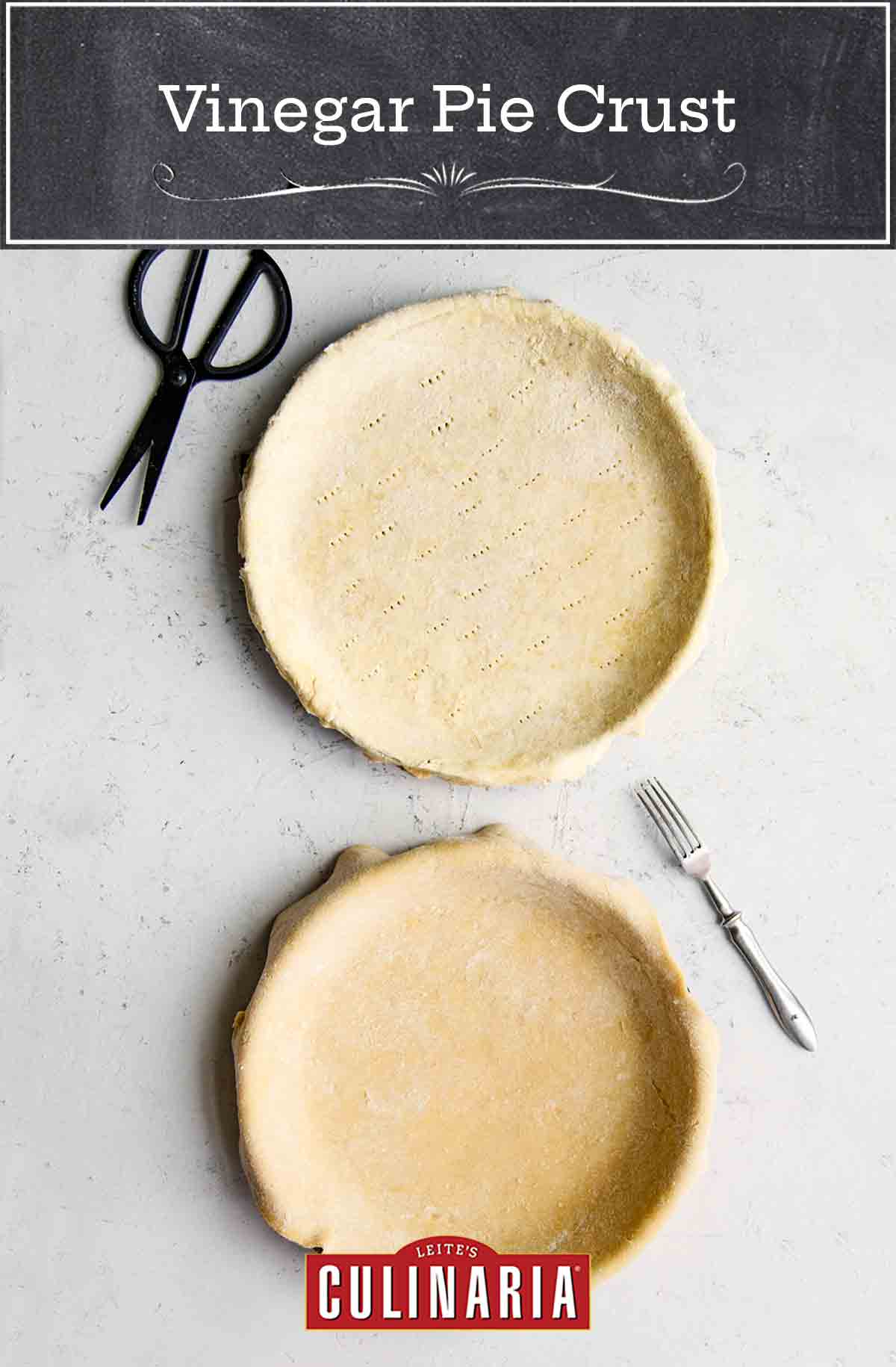
The vinegar in this crust is a flavorless stabilizer, making the dough more forgiving and patchable. In addition to being easy to work with, it also tastes great—even butter-loving pastry fans enjoy the flavor.–Mollie Cox Bryan

Vinegar Pie Crust
Ingredients
- 2 cups all-purpose flour, plus more for the work surface
- 1/2 teaspoon salt
- 1 cup plus 1 tablespoon vegetable shortening
- 1 1/2 teaspoons distilled white vinegar*
- 1 egg, lightly beaten
- 4 to 6 tablespoons ice water
Instructions
- Sift the flour and salt into a bowl and cut in the shortening with a pastry blender or, if you must, your fingertips until it is the size of small peas. Using a fork to lightly mix the ingredients, add the vinegar, egg, and just enough ice water to moisten the dry ingredients, being sure to add the ice water 1 tablespoon at a time. The dough will be sticky.
- Divide the dough in half, form it into 2 equal-size balls, then flatten each ball into a disk. Roll out the crusts right away or wrap each tightly in plastic wrap and refrigerate for up to 2 weeks. When you're ready to bake a pie, on a lightly floured surface, roll out a portion of dough to a thickness of about 1/8 inch, fit it into a 9- or 10-inch pie plate, and proceed according to your pie recipe.
- To bake an empty crust, preheat the oven to 400°F. Press 1 rolled-out crust into a 9- or 10-inch pie plate. Line with parchment paper and weigh the crust down with dry beans or pie weights to keep the crust from bubbling or shrinking. To parbake the pie crust, bake for 10 minutes, until firm and lightly browned. To prebake the crust, remove it from the oven after 10 to 20 minutes, when you first see a golden hue to the crust.
Notes
*Why would I add vinegar to a pie crust?
Think of it as a secret ingredient. A dash of vinegar in your pie dough will help to prevent the formation of gluten while you’re rolling everything out. That formation of gluten is what makes for a tough crust. And trust us…that’s what all pies are judged on, no matter how fantastic the filling.
Nutrition
Nutrition information is automatically calculated, so should only be used as an approximation.
Recipe Testers’ Reviews
The vinegar pie crust recipe is a TC for all the right reasons. Now if this tester could only get her act together and learn how to roll a pie crust, it would be mind-bending. The recipe is uncomplicated, straightforward, and makes one sticky dough. Never mind what it looks like or how it behaves—when it came to the finished bake-off, my tasters were licking their plates, and the pie plates, too.
I used this for a from-scratch banana cream pie for a Father’s Day treat. I only used 1 tablespoon of the ice water, and even that made a really wet, sticky dough. But after baking, who really could remember all of that when faced with the flakiest, most delicate, delicious pie crust this side of a spatula? Certainly not us, and we give it a TC+.
Pie crusts are always my least favorite thing to make, but this one was easy as pie! What I really liked is that I could either use it right after making it or put it in the fridge. I put it in the fridge for a few hours and was concerned that when I was ready to roll it out, it would be too stiff to roll. But this was not the case.
This dough is fairly moist, so you can use a good amount of flour to keep everything from sticking without drying it out. I used this with the peach pie recipe and it was a hit all around. Brushing with the butter right out of the oven really helps to keep this a flaky, moist pie.













Replace the vegetable shortening with lard and you will really have it going on!
Couldn’t agree more, Preserved and Pickled…!
Lard is awful and also unhealthy. It’s animal fat, pork to be exact.
Hello, Linda. Lard is not as bad as you might think. Check out this article on its health benefits.
Please tell everyone what you like to use in your crust. I`ve used leaf lard that I rendered myself from a pig. It`s pure lard that surrounds the kidneys and is the finest purest lard attainable making it the healthiest animal fat one can use. It makes a delicious crust among other things. Duck fat is a close second. I highly encourage reading David Leite’s link you’ll be enlightened.
lowandslow, well you got me. I’ve tried leaf lard, butter, European butter, shortening, shortening plus butter. I’ve never tried duck fat. Ever. And I have a big-ass container in my freezer. (I think you know where I’m going with all this…!)
I used this crust for the peach pie that’s linked here (also a winner). I definitely echo the comments already made: a simple crust that’s light, flaky, and fabulous. Like Karen, I added only 1 Tablespoon of ice water to my crust recipe and was afraid it was instantly too moist. I was nervous about all the flour I used to compensate while rolling it out so that it didn’t stick, but I needn’t have worried, it seems. To prevent sticking, I also rolled on a sheet of parchment paper, which had the added benefit of helping me flip the top crust over the pie without drama or disaster. Definitely this is a keeper in my repertoire of pastry crusts.
I totally agree! It is simular to the one my Grandmother used for many years! It always turned out nice and flaky!
I have seen a similar pie crust in an old Southern church cookbook. I love how the dough is so easy to work with. I’ve used butter-flavored Crisco before and it works well. Thanks for sharing!
Many thanks, Jessica. Appreciate your suggestion. The vinegar trick is an old one but a good one…anyone else have any other tricks or tactics they find particularly useful when it comes to vinegar pie crust?
Patch the crust into the pan with your hands, It is much easier than rolling it out. But when it comes to the cover, just do your best with flour and a spatula.
Love that approach, Morgan. I’m all about the rustic look when it comes to pie crust…